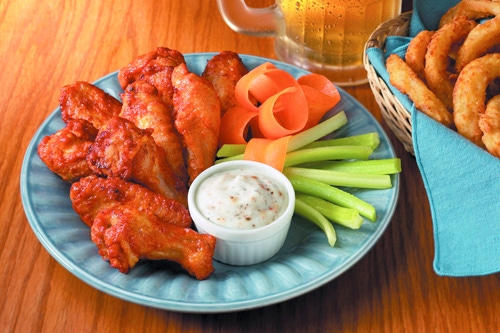Meat and poultry suppliers need to work harder and find better ‘hurdles’ to incorporate into their food safety practices.
January 24, 2020

Last Sunday, the Washington Post headlined a feature story, “He helped make burgers safer. Now he’s fighting food poisoning again.”
It was a story about fireworks aimed at the meat and poultry industry by Bill Marler, an attorney who has long haunted what he considers errant food processors. His success is remarkable. Be forewarned; he is also capable of exercising a devastating nuclear option, too.
Bill Marler first talked with the meat industry long ago. It was near the close of the 20th century that he tapped them on the shoulder and said, “Pardon me, but your inactions have caused hundreds to be sickened and killed four children at Jack in the Box. Would you mind taking E. coli out of your product mix?”
The meat industry opposed him, saying the technology needed to prevent or eliminate the contamination had not yet been developed. It also argued that meat prices would rise for consumers. The industry lost the argument twice: once in a legal battle with Marler in court and a second time in the more damaging court of public opinion. Now, the battle is joined again, this time on the issue of salmonella. Marler has presented U.S. Department of Agriculture officials with a petition asking that 31 strains of the increasingly prevalent pathogen be labeled as adulterants, citing legal, scientific and moral arguments.
According to Coral Beach, managing editor of Food Safety News, “The plaintiffs on the petition are salmonella victims Rick Schiller, Steven Romes and the Porter Family. The consumer advocacy groups petitioning for the change are Food & Water Watch, the Consumer Federation of America and Consumer Reports. Specifically, the petition asks the USDA’s Food Safety & Inspection Service to declare the following outbreak serotypes of salmonella as adulterants in meat and poultry products:
Salmonella Agona, Anatum, Berta, Blockely, Braenderup, Derby, Dublin, Enteritidis, Hadar, Heidelberg, I 4,[5],12: I :-, Infantis, Javiana, Litchfield, Mbandaka, Mississippi, Montevideo, Muenchen, Newport, Oranienburg, Panama, Poona, Reading, Saintpaul, Sandiego, Schwarzengrund, Senftenberg, Stanley, Thompson, Typhi, and Typhimurium.”
The North American Meat Institute (NAMI) responded to the Washington Post’s request for the industry point-of-view about the Marler petition this way: “With E. coli, it was a wake-up call for an industry that wasn’t paying attention to that pathogen. The industry is not asleep at the wheel with salmonella,” said Mark Dopp, a vice president of NAMI. “We are doing everything we can think of. Declaring something to be an adulterant isn’t going to make us swim faster or harder. We are swimming as fast and hard as we can.”
Sounds familiar. It’s an almost verbatim copy of the American Meat Institute reply made about E. coli a quarter-century ago. By the way, the industry began swimming faster and harder and has almost completely solved its E. coli issue. They were so successful that when other food industry officials – in the produce industry, for instance - asked how they could avoid recalls, Marler told them to look to the beef industry.
Marler viewed the AMI’s 20th century response as foot-dragging, less than adequate, maybe even callous in the extreme. I think he will have the same opinion about NAMI’s 2020 reply.
He knows that USDA data shows 10% of raw poultry sold at retail is probably contaminated with salmonella. Worse, the Center for Disease Control & Prevention estimates that salmonella contamination causes an annual 1.35 million infections, 26,500 hospitalizations and 420 deaths in the U.S.
People are equally surprised, Marler said, to learn that the federal government “stamps meat ‘USDA certified,’ all along knowing that it could be contaminated with cow or chicken feces.”
I suppose he could go after USDA on a truth in labeling issue.
Signaling the blunt, gloves off and bare-knuckled no-holds-barred approach he’s taking, he told the Post, “Chicken s--- shouldn’t be on chicken flesh, it should be in chickens’ guts. Period. End of story. Same with cows and same with pigs. It shouldn’t be on our food.”
But NAMI and the National Chicken Council (NCC) say there is nothing unnatural about salmonella getting into the food supply. NAMI says the bacteria is in the intestinal tract as well as lymph nodes, making it extremely difficult to eliminate. The NCC says just cook it, a response that Marler finds absurd.
Marler has always argued that making consumers fully responsible for killing the bacteria in their food is ridiculous. Marler has research that shows people do not follow USDA safety instructions. “You can’t put this burden on the consumer — it doesn’t work,” is something he’s said often, most recently to that Washington Post writer.
The industry, led by organizations like NAMI and NCC, is intimately familiar with the food safety tune about keeping it clean and keeping it cold. It keeps the consumer healthy and happy.
So why are they so tone-deaf in their responses? Waiting for a visit from Bill Marler never turns out well. Meat and poultry suppliers simply have to work harder, find better ‘hurdles’ to incorporate into their food safety practices and stay in front of the issues. Not placing products into commerce that could sicken or kill consumers is absolutely job #1.
Don’t wait for Bill.
About the Author(s)
You May Also Like
.png?width=300&auto=webp&quality=80&disable=upscale)


